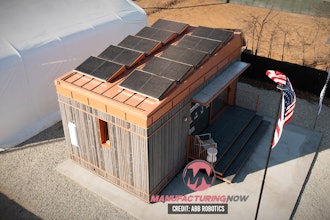The first U.S. lunar lander in more than 50 years is currently on its way to the Moon but the mission has already been plagued with problems and now things aren’t looking too good for Astrobotic’s Peregrine.
Shortly after the Peregrine was launched aboard United Launch Alliance's Vulcan rocket, it began experiencing issues. After separating, many systems powered on and performed as expected. However, the company reported an anomaly that prevented the Peregrine from properly pointing its solar panels toward the sun.
Astrobotic said it was able to perform a maneuver that caused it to briefly lose contact with the Peregrine but ultimately helped reposition it so it could use its solar power system to charge its batteries.
Most Read on IEN:
- 3M Announces U.S. Pension Plan Actions
- Boeing Starts Chopping Up Old MD-90 to Create New Experimental Aircraft
- Airlines Found Loose Parts in Door Panels on Boeing Max 9 Jets
- Aerojet Rocketdyne to Boost Solid Rocket Motor Production in the U.S.
From there, though, the news got worse. The team at Astrobotic determined that the anomaly was related to the lander’s propulsion system and that it had caused a “critical loss of propellant.” Without a properly functioning propulsion system, the company said the Peregrine’s ability to soft land on the Moon is in jeopardy.
Astrobotic said it’s trying to stabilize the fuel loss but didn’t sound overly optimistic. It said its focus now is on collecting as much data as it can while the lander’s batteries are still charged.
The company said “At this time, the majority of our Peregrine mission team has been awake and working diligently for more than 24 hours,” while promising to provide further updates as more information becomes available.
This is a developing story but as of right now, it’s not looking promising.
Update: Astrobotic has officially given up on landing the Peregrine on the Moon. The lander will burn up in Earth's atmosphere.






















